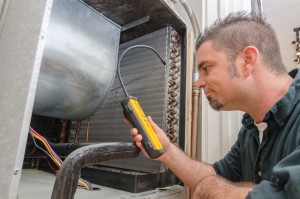A large amount of a commercial building’s energy consumption — around 54% — can be attributed to the building’s HVAC systems. And that means it’s important to make sure one has the right parts and components to run them efficiently.
But what if those parts are not what you think they are?
The most common refrigerant for air conditioning units is becoming more and more scarce, and counterfeit units are starting to flood the market. These fake refrigerants are posing a safety risk to owners and a problem that can ruin the entire AC system they are installed in.
AC repair contractors state that one of the biggest expenses that is driving up their repair costs is the price of the R-22 refrigerant, the most common refrigerant for HVAC systems.
“It’s exorbitantly expensive today,” says Brian Kelly of Allen Kelly and Company in Raleigh.
R-22, also known as “Feron,” is being phased out in order to protect the ozone, which is why its price is increasing so much. Thirty years ago, a cylinder of it cost $20, but now that price is closer to $800.
New units generally use the coolant known as R-410a, but unfortunately, many units still use the old R-22. That has led to the spawning of a lot of counterfeits, which can wreck your AC unit.
“It can actually create compressor problems,” explains Kelly. “The compressor is like the engine on your car – you don’t want to replace it.”
HVAC contractors that want to avoid accidentally purchasing counterfeit refrigerants need to look for a special seal that encloses the valves of the canisters. And they need to make sure they’re buying only from a wholesaler.
R-22 manufacturers, like DuPont, have gone a little further by adding specially designed security labels to their products. This is so contractors know that the R-22 they’re buying is legitimate.
“We won’t deal with a third-party supplier,” says Kelly. “We’re not buying it off a pickup truck or a flea market in Wake County.”







